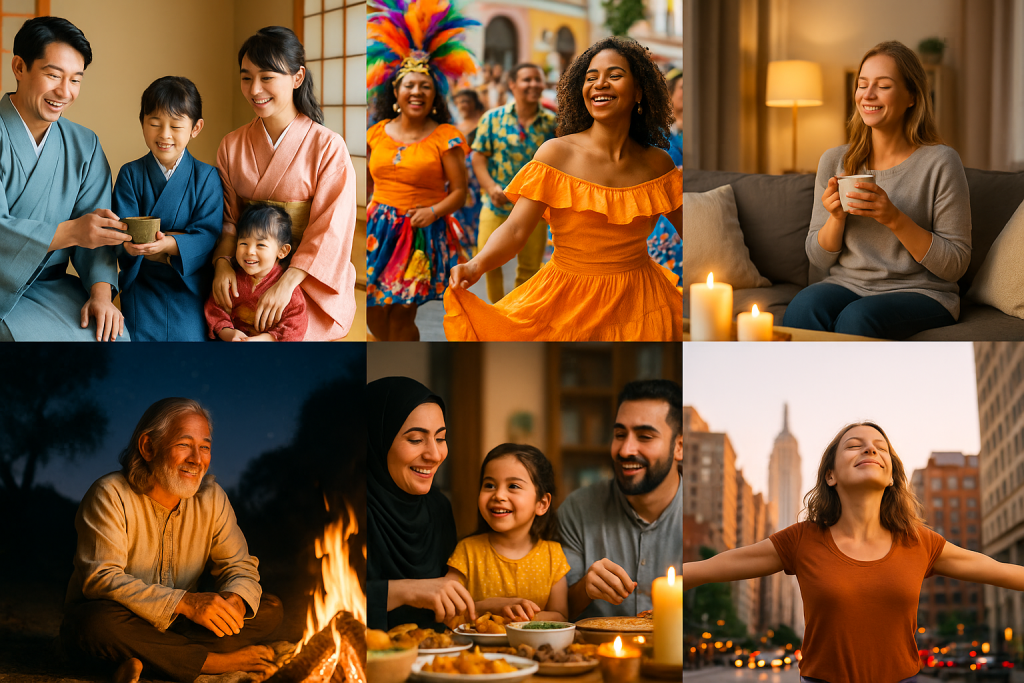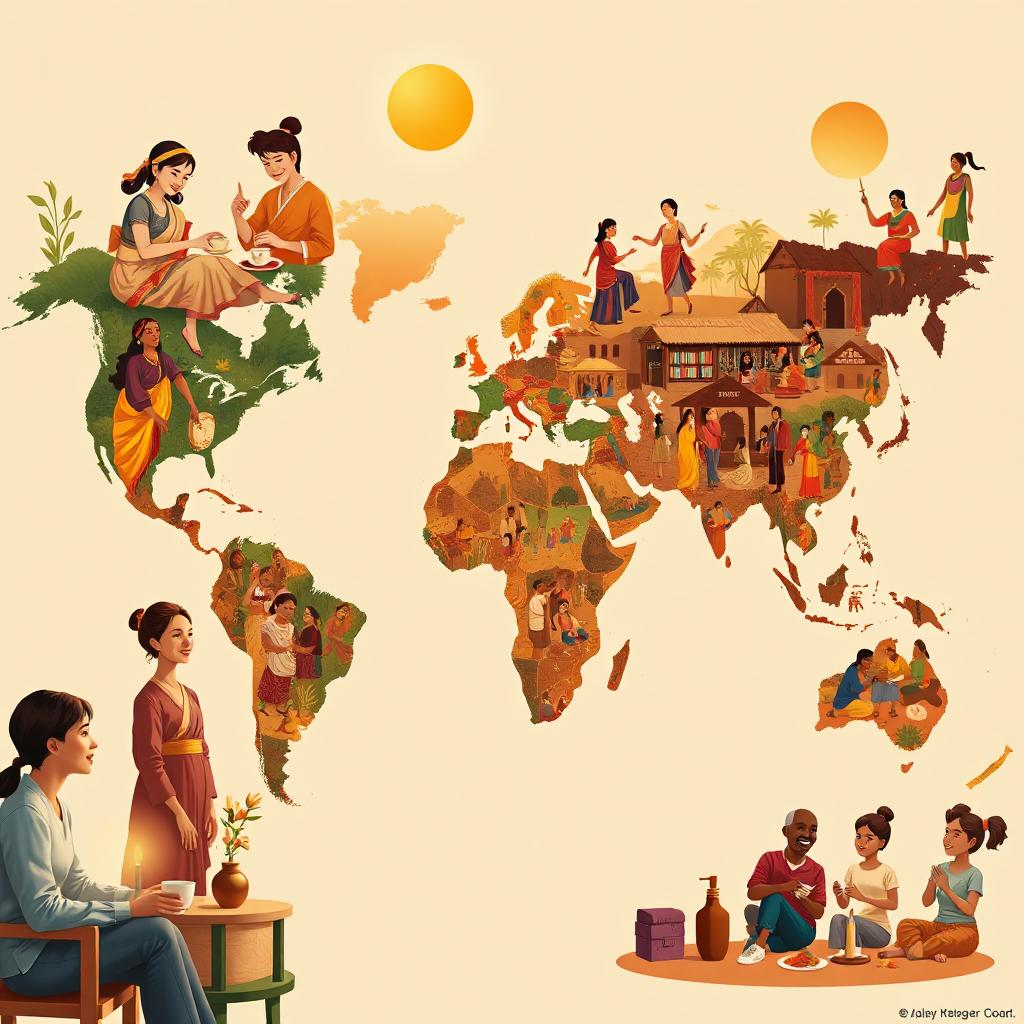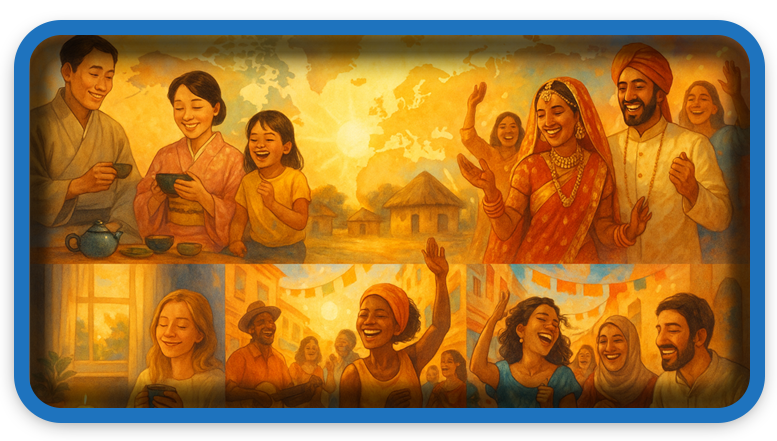⏲️ Estimated reading time: 5 min
🧭 The perception of happiness varies significantly across cultures, shaped by values, traditions, and collective ideals. From the West to the East, from spiritual balance to social harmony, here’s how happiness is viewed around the world.
🌏 Cultural Perspectives on Happiness
Is a universal desire; however, how people define and pursue it depends heavily on cultural context. While some societies value personal independence, others emphasize harmony, spirituality, or social welfare. Let’s take a deeper look at the diverse ways cultures understand.
🤝 Collectivist Cultures: Harmony Over Individual Joy
In East Asian cultures such as Japan, China, and Korea, people tend to associate happiness with the well-being of the group. These societies:
- Prioritize social harmony and cohesion
- Uphold filial piety and elder respect
- Value collective identity over personal ambition
Rather than chasing individual dreams, many find fulfillment through family responsibilities, mutual support, and communal achievements. Thus, happiness emerges from being a valuable part of a well-functioning group.
🧍♂️ Individualist Cultures: Pursuit of Personal Fulfillment
In contrast, countries like the United States, Canada, and Australia often view happiness through a personal lens. These cultures:
- Celebrate self-actualization and autonomy
- Encourage goal setting and personal success
- Promote freedom of expression
People believe that happiness comes from achieving individual goals, expressing their identity, and living authentically. As a result, personal accomplishments play a crucial role in their pursuit of joy.
🌿 Indigenous Cultures: Balance with Nature and Spirit
Meanwhile, many indigenous societies, from Australia’s Aboriginal groups to Native American groups, define happiness differently. For them, happiness involves:
- Maintaining harmony with nature
- Honoring spiritual traditions
- Strengthening community bonds
They see joy as a result of balance between people and the land, between ancestors and descendants, and between spiritual and physical life. Therefore, happiness is not something to chase, but a state to maintain.
🧣 Nordic Countries: Simplicity and Social Trust
Nordic countries such as Sweden, Denmark, and Norway frequently rank among the happiest globally. Their approach includes:
- Embracing “hygge” coziness, comfort, and contentment
- Trusting in social institutions
- Supporting universal welfare and equality
Unlike in high-pressure societies, people here find happiness in simple, everyday moments: sharing a meal, enjoying a quiet evening, or trusting that their needs will be met. In essence, happiness stems from security and social equality.

🎉 Latin American Cultures: Living in the Moment
Latin American nations like Mexico, Brazil, and Colombia offer another vibrant perspective. Here, revolves around:
- Prioritizing family and friends
- Engaging in music, dance, and community celebrations
- Savoring the present moment
Although many face economic challenges, their strong emphasis on joy, laughter, and relationships allows them to experience happiness in daily life. Consequently, cultural richness becomes a key source of well-being.
🕌 Middle Eastern Cultures: Faith and Blessings
In the Middle East, including countries like Iran, Egypt, and Saudi Arabia, happiness is closely tied to:
- Spiritual fulfillment and religious devotion
- The importance of family and tradition
- Gratitude for divine blessings
People often see happiness as a gift from a higher power, obtained through spiritual practice, generosity, and family honor. Hence, personal satisfaction is often secondary to spiritual integrity.
🌐 Why It Matters: Appreciating Cultural Diversity
Understanding these differences helps us:
- Avoid cultural misunderstandings
- Develop global empathy
- Create tailored mental wellness strategies
For instance, mental health campaigns in collectivist societies should focus on community support, whereas those in individualist societies may highlight personal resilience. Therefore, cultural sensitivity is essential when discussing happiness.
💡 Globalization and the Changing Face of Happiness
As the world becomes increasingly connected, cultural boundaries begin to blur. Consequently, we see:
- Young people embracing hybrid values
- Eastern cultures adopting Western self-care ideas
- Global movements promoting digital minimalism and balance
Although this blending creates new opportunities for happiness, it also risks diluting traditional values. To counter this, preserving cultural identity while embracing change is vital.

🔍 What Do Cultures Have in Common?
Despite their differences, cultures across the globe share some fundamental views:
- Relationships matter everywhere
- A sense of purpose gives life meaning
- Gratitude and acceptance enhance joy
- Safety and security support long-term well-being
Therefore, while happiness looks different from one place to another, the emotional roots remain strikingly similar.
📊 Rethinking Global Happiness Rankings
Often, global reports measure happiness using metrics like income, health, and life expectancy. However, such indicators may not fully reflect cultural happiness. For example:
- In spiritual societies, faith and inner peace might be more relevant
- In collectivist cultures, family and community ties matter more than wealth
To truly understand global happiness, we must move beyond Western-centric models and value lived experiences.
🌼 Shared Joy, Different Paths
Ultimately, happiness is not a fixed formula. It is a cultural journey, shaped by history, geography, and tradition. Whether you’re embracing the peaceful simplicity of Nordic life, connecting with ancestral wisdom in indigenous communities, or chasing dreams in Western cities, comes in many valid and beautiful forms.
Rather than asking, “Which culture is happiest?”, we should ask, “What can we learn from each other’s joy?”
🔔 For more tutorials like this, consider subscribing to our blog.
📩 Do you have questions or suggestions? Leave a comment or contact us!
🏷️ Tags: cultural psychology, happiness, global perspectives, collectivist values, individualism, indigenous wisdom, Nordic lifestyle, Latin culture, Middle Eastern traditions, spiritual wellness
📢 Hashtags: #CulturalHappiness, #GlobalJoy, #MentalWellness, #HappinessMatters, #IndigenousWisdom, #SpiritualHappiness, #NordicLiving, #CollectiveJoy, #IndividualSuccess, #WorldCultures
Only logged-in users can submit reports.
Discover more from HelpZone
Subscribe to get the latest posts sent to your email.

